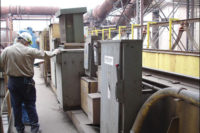This was in the early 1980s. You weren’t expected to entertain; the attendees were expected to pay attention and learn. I replied, “Nothing, electrical safety is serious business.” He suggested hiring a clown to perform while I conducted the training. I didn’t think that was such a great idea and I never heard from him again, by mutual consent. That guy was waaaay ahead of me! I was brought up old school — sit down, shut up and learn or else.
Over the years, I saw the workforce landscape shift. Workers were not as focused, not as willing to do whatever it took to learn and excel. I’m not knocking anyone or any generation. My father would have been disappointed in my work ethic if I started talking about a bunch of safety poop to him. He’d say “Hey! Get the job done, period. If you get banged up a bit, that’s all part of it.” I wouldn’t accept that then or now. Things change.
Younger workers expect an interesting and rewarding experience. They want to participate, not just listen. Technicians learn by doing. Classroom instruction is important to convey concepts and teach basic knowledge but that has to be reinforced with some application of what they just learned. Younger workers are easily bored or distracted. They are used to fast-paced, colorful and interesting, ever-changing input. So how should we approach training?
Muddy waters
While writing this article, the further I researched learning retention, the muddier the waters became. Dr. Edgar Dale’s “cone of learning”1 is usually depicted as in Figure 1. The original cone of experience (from his book) did not include any percentages, but was a visual representation of abstraction.2 The closer to the pinnacle of the cone, the more abstract the experience.
I found numerous articles, blogs and papers debunking the percentages used on the cone or triangle. But I also found several that seemed to support the cone of experience or learning.
One paper concludes that all people will learn and get faster at doing a task with repeated practice, people who have prior experience will learn similar tasks more quickly than those who do not, and skills degrade over time if not used.3
I believe from my experiences conducting training since 1980 that the general pattern of learning depicted in the learning pyramid is correct. It’s not the percentages that really matter; it’s the concept that as learning methods become more abstract, learning is more difficult.
Traditional vs. active learning
Dr. Paul H. Kvam conducted a study measuring learning retention based on traditional methods and active learning.4 Two separate classes participated, with a test given at the end of the class and one eight months later. Interestingly, for the more talented students, Dr. Kvam did not see a benefit to the active learning method. Beneficiaries were primarily the above average to below average students. Dr. Kvam stated that the study indicated that active learning helped these students retain more than students in the traditional class. Because of the small number of students returning for the second exam, he could not make a stronger statement. Still, Dr. Kvam’s study does provide one more indicator that non-traditional/active learning methods can be more effective than the traditional lecture.
My opinion
My opinion is based on 34 years of conducting technical skills training, developing technical skills training and managing technical trainers. For technical training, the classroom portion needs to be short, or as short as possible, broken up by practical exercises or hands-on lab sessions, as appropriate. Extended classroom sessions should have breaks about every hour, with some unexpected entertainment thrown in, such as short video clips that relate to the training being conducted. Other ideas include having a drawing or pop quiz with a small prize or award. People like to be recognized in front of their peers, and it can become pretty competitive.
If the class lends itself to hands-on lab sessions, divide the training into modules. The classroom session introduces the hands-on lab session. For technical subjects, this has proven to be the most effective method of training. If possible, have the hands-on lab sessions on the same equipment or devices they will be working on. Mockups and simulators work well for some subjects, not so well for others. Training on the real-deal always works. It’s helpful if trainees work in teams of two, so they can discuss and assist each other, with the instructor jumping in to guide and demonstrate where needed. (See Figure 2.)
Make sure everyone participates in class and in the labs. Someone who is not engaged is not learning, no matter what they say. Make physical contact. Pat people on the shoulder as you walk by. I like to walk and talk. I’ll circle the room and stop to engage different people. Some instructors tell jokes; I like to aggravate and challenge the students.
An effective outcome
Different people with different backgrounds and experience, along with differing abilities, skills and tendencies are going to learn in different ways. Those successful in school probably can learn effectively by traditional methods. Others who cannot learn as effectively using traditional methods either have to work harder to score lower or find a different career path. Motivated people will learn and retain at a higher rate, as will people who are under pressure to learn.5
Whether you have any confidence in the actual percentages given by the cone of learning or not, the basic concept supports my personal experience and the experience of others I know and associate with in the technical training area. Training has to be focused on what is pertinent for the attendee to know in order to perform their job tasks. The more focused it is, and the more hands-on lab sessions that can be worked into the training, the more effective technical skills training will be.
Bibliography
1. Dale, E., “Audio-Visual Methods in Technology”, Holt, Rinehart and Winston, 1969
2. Metiri-Group, “Multimodal Learning Through Media: What the Research Says”, CISCO Systems, Inc., 2008
3. Ritter, F. E., Baxter, G., Kim, J. W., Srinivasmurthy, S., “Learning and Retention”, for submission to the Handbook of Cognitive Engineering, 08/2010
4. Kvam, P., “The Effect of Active Learning Methods on Student Retention in Engineering Statistics”, The American Statistician, Vol. 54, No. 2, May, 2000.
5. Armen, “Memory Retention Rates Tell You How To Learn”, TimelessInformation.com



